Ready to put your Tech Tutors skills into practice? WILDLABS and Freaklabs are proud to announce our new virtual course: Build Your Own Data Logger. This eight-part video tutorial series will guide wildlife and conservation researchers through building and deploying custom hardware using the Arduino platform. To join, Register now!
This course is free to all, but if you would like to build along with the course in real-time, you can purchase the WildLogger board and kit for $30 (USD) here
About the Series
If our first season of Tech Tutors inspired you to put your conservation tech skills to the test, we've got a brand-new experience coming to WILDLABS! Where can you start learning how to use Arduino to build custom devices for wildlife and conservation research? Right here!
Beginning this November, WILDLABS and Freaklabs are proud to introduce an eight-part video tutorial series that guides wildlife and conservation researchers through building and deploying custom hardware using the Arduino platform. The series will use WildLogger - an Arduino-based board that’s designed for deployment - to create a custom data logger.
Are you new to Arduino, or maybe not entirely sure what Arduino is? Good news - this series is for beginners like you! By the end of our eight modules, you'll have the practical skills and knowledge base you need to deploy your creation for real.
The series assumes no hardware experience. It’ll cover common terminology, components, the hardware design stack, setting up the Arduino environment, programming and optimising your application, choosing and modifying enclosures, piloting, testing, deploying and troubleshooting.
You’re not on your own. Our interactive series makes it easier than ever to get feedback and guidance as you learn. Every two weeks, we’ll host a live Office Hours event to troubleshoot, answer questions in person, and release the next module in the series. We'll also have cheat sheets and code to download, plus a forum to ask questions between sessions. And of course, you can build along with the course in real-time with the WildLogger board and kit, available here.
The tutorial is free and allows you to move at your own pace with videos available to all on the WILDLABS Youtube channel. To navigate through all course content, visit the Course Directory.
To join this virtual course, register here!
Group curators
- @Freaklabs
- | He/Him
Freaklabs
I'm an engineer and product designer working in conservation technology. I specialize in technology for landscape restoration and wildlife behavioral ecology.



- 1 Resources
- 307 Discussions
- 20 Groups
Freaklabs
Develops open source technology for wildlife and conservation researchers



- 0 Resources
- 11 Discussions
- 2 Groups
No showcases have been added to this group yet.
WILDLABS & Wildlife Conservation Society (WCS)
I'm the Bioacoustics Research Analyst at WILDLABS. I'm a marine biologist with particular interest in the acoustics behavior of cetaceans. I'm also a backend web developer, hoping to use technology to improve wildlife conservation efforts.





- 40 Resources
- 38 Discussions
- 33 Groups
R & D Tech | Industrial Designer | Wildlife Management Technology



- 0 Resources
- 93 Discussions
- 6 Groups
- @carlybatist
- | she/her
ecoacoustics, biodiversity monitoring, nature tech



- 113 Resources
- 361 Discussions
- 19 Groups
- @TaliaSpeaker
- | She/her
WILDLABS & World Wide Fund for Nature/ World Wildlife Fund (WWF)
I'm the Executive Manager of WILDLABS at WWF



- 23 Resources
- 64 Discussions
- 31 Groups
- @theindieg
- | he/him
Running a small electronic engineering company focused on large scale sensor networks. We have interest in bioacoustics with bat and bird recorders, as well as a host of environmental sensors.


- 0 Resources
- 16 Discussions
- 6 Groups
- @Jeorgiopierre
- | Him he his
Field researcher and systems designer operating a mobile apicultural laboratory focused on the study of terroir-specific variation in bee-derived products. Through Apis Nomadica Labs, I deliver pollination services to regional farms while simultaneously collecting ecological data
- 0 Resources
- 1 Discussions
- 10 Groups
Wildlife photographer with a focus on conservation. Collaborating with conservation projects around the world.
- 0 Resources
- 0 Discussions
- 6 Groups
Founder of Owl Sense, we create low cost, long running audio recorders.


- 0 Resources
- 7 Discussions
- 3 Groups
Natural Solutions

- 0 Resources
- 17 Discussions
- 10 Groups



- 0 Resources
- 3 Discussions
- 8 Groups
Smithsonian Institution
- 0 Resources
- 0 Discussions
- 13 Groups
- 0 Resources
- 0 Discussions
- 7 Groups
The Marine Innovation Lab for Leading-edge Oceanography develops hardware and software to expand the ocean observing network and for the sustainable management of natural resources. For Fall 2025, we are actively...
6 October 2024
Can conservation-based incentives promote the willingness of local communities to coexist with wildlife? A case of Burunge Wildlife Management Area, Northern Tanzania
10 July 2024
Manufacturing Partnership Brings Low-Cost Pipistrelle Family of Detectors to Researchers, Ecologists and Bat Enthusiasts Around the World
2 July 2024
WildLabs will soon launch a 'Funding and Finance' group. What would be your wish list for such a group? Would you be interested in co-managing or otherwise helping out?
5 June 2024
Article
Read in detail about how to use The Inventory, our new living directory of conservation technology tools, organisations, and R&D projects.
1 May 2024
Article
The Inventory is your one-stop shop for conservation technology tools, organisations, and R&D projects. Start contributing to it now!
1 May 2024
The primary focus of the research is to explore how red deer movements, space use, habitat selection and foraging behaviour change during the wolf recolonization process.
10 February 2024
A secure platform designed for those working to monitor & protect natural resources. Insight facilitates sharing experience, knowledge & tools to increase efficiency & effectiveness in conservation. By...
7 November 2023
Can you create an ecological data collection application on Android for Gibbon and Biodiversity Research. Check out this opportunity with us!
24 August 2023
We are recruiting a graduate student to work on a 3D groundwater flow sensor in collaboration with USGS. Experience with C/C++ or similar programming languages is preferred, but not required.
12 July 2023
Spaceborne Satellite-tag RF Systems to Measure Spatiotemporal Patterns of Wildlife
12 July 2023
Careers
Permanent and Full Time role at the UK Centre for Ecology & Hydrology
8 June 2023
June 2025
event
| Description | Activity | Replies | Groups | Updated |
|---|---|---|---|---|
| Wow this is amazing! This is how we integrate Biology and Information Technology. |
|
Camera Traps, AI for Conservation, Build Your Own Data Logger Community, Data management and processing tools, Marine Conservation, Protected Area Management Tools, Geospatial | 2 weeks 2 days ago | |
| No air in the vessel. Hydraulic pressure testing is just that because any vessel failure does not cause explosive release of gas and possibly vessel fragments as a result. ... |
|
Build Your Own Data Logger Community | 3 months 1 week ago | |
| Hi, we've gotten more than 20 replies until now so thank you if you took the time to answer.And we would really appreciate if you could spare a few minutes to answer if you haven'... |
|
Emerging Tech, Animal Movement, Build Your Own Data Logger Community | 4 months ago | |
| I have now built my fox and cat trap.I want to triger it by face reconition so not to get possums or goanners.Can you help ?Doug Hemingway.0418 390 701 |
|
Acoustics, Build Your Own Data Logger Community | 5 months ago | |
| Hi Dan, Not right now but I can envision many uses. A key problem in RS is data streams for validation and training of ML models, its really not yet a solved problem. Any... |
|
Emerging Tech, AI for Conservation, Animal Movement, Build Your Own Data Logger Community, Camera Traps, Connectivity, Conservation Tech Training and Education, Data management and processing tools, Geospatial, Sensors | 5 months 3 weeks ago | |
| Thanks! I am familiar with EarthRanger but wasn't aware it could be used for behavioural data collection |
+6
|
Build Your Own Data Logger Community, Data management and processing tools, Open Source Solutions | 6 months 1 week ago | |
| Hello everyone,I built Brave Puffin (https://bravepuffin.com) - a small, autonomous, long range, solar powered boat. It is designed to... |
|
Build Your Own Data Logger Community, Marine Conservation, Sensors | 7 months 3 weeks ago | |
| Steve and I are looking to develop a low-cost benthic drift camera with a live video feed. Our hope is to use an acoustic modem to give us a low quality feed for navigation /... |
|
Marine Conservation, Build Your Own Data Logger Community, Connectivity, Emerging Tech, Open Source Solutions | 7 months 3 weeks ago | |
| @BrettMargoSupplies @Rob_Appleby @StephODonnell HI all,sorry for falling off the chat so suddenly and for so long. I really appreciate all your comments, suggestions and... |
+7
|
Build Your Own Data Logger Community | 9 months 1 week ago | |
| Hi Brett, I am interested in developing really low cost multi channel underwater acoustic recorders. Can you tell me a bit more about the board and stuff you were using... |
|
Build Your Own Data Logger Community, Acoustics, Camera Traps, Climate Change, East Africa Community, Marine Conservation, Open Source Solutions, Protected Area Management Tools | 9 months 3 weeks ago | |
| Hey Xavier! Thank you for your interest and question!! The overarching goal of the FinDrop v1 for the WildLabs award is to characterize an instrument and make it as, if... |
|
Acoustics, Build Your Own Data Logger Community, Marine Conservation, Protected Area Management Tools, Sustainable Fishing Challenges | 11 months 2 weeks ago | |
| Thanks both for the replies and apologies for my tardy response. It seems this is not straightforward problem which is a shame as something which could do this would be very handy... |
|
Build Your Own Data Logger Community, Citizen Science | 1 year 2 months ago |
Jupyter Notebook: Aquatic Computer Vision
25 January 2024 5:50am
27 January 2024 6:11am
Am working on similar AI challenge at the moment. Hoping to translate my workflow to wolves in future if needed.
We all are little overstretched but it there is no pressing deadlines, it should be possible to explore building efficient model for object detection and looking at suitable hardware for running these model on the edge.
28 July 2025 1:20pm
Wow this is amazing! This is how we integrate Biology and Information Technology.
Free webinar: The Road Towards Predicting Sturgeon Migration
6 June 2025 1:14pm
Boombox Workshop at ICCB 2025
16 May 2025 8:18am
DIY: Pressure Chamber
17 April 2025 3:31pm
5 May 2025 3:50pm
Yeah, you definitely need to try and purge any air in the tank!
I've seen the effect of a tank lid shearing off, and it wasn't pretty (no one hurt, but it could've very easily been a different story).
5 May 2025 7:07pm
5 May 2025 7:11pm
No air in the vessel. Hydraulic pressure testing is just that because any vessel failure does not cause explosive release of gas and possibly vessel fragments as a result. It is still not pretty, as Thomas Gray says, but it is orders of magnitude safer.
Expert feedback wanted: Energy Harvesting
13 March 2025 12:40pm
11 April 2025 10:57am
Hi, we've gotten more than 20 replies until now so thank you if you took the time to answer.
And we would really appreciate if you could spare a few minutes to answer if you haven't by now!
Thank you,
David, Kinect team
Nature FIRST Conference: Innovation and Collaboration in Conservation
11 March 2025 9:39am
Vertual Fence
27 January 2025 6:26am
28 January 2025 12:38am
Hi Doug.
We are located in Melbourne and work with Bush Heritage in large reserve monitoring. Would love to chat and hear more about the issues you are having to see if we can help out with it. Let me know via private message and we can set up a meeting.
Akiba
28 January 2025 8:41am
I will be back in Melbourne Thursday.
I would like to send you the Florer and Forner study done in 2010 to bring you up to speed.
I'm new to this and can't find the attachment key.
Can you send an email address?
Doug
10 March 2025 6:18am
I have now built my fox and cat trap.
I want to triger it by face reconition so not to get possums or goanners.
Can you help ?
Doug Hemingway.
0418 390 701
The 100KB Challenge!
7 February 2025 11:47am
20 February 2025 9:13am
Nice one - what kind of thing would you use this for?
~500mA peak current, it has a similar power profile as the current RockBLOCK product, in that it needs lots of juice for a for a small period of time (to undertake the transmission) we include onboard circuitry to help smooth this over. I'll be able to share more details on this once the product is officially launched!
20 February 2025 9:13am
~500mA peak current, it has a similar power profile as the current RockBLOCK product, in that it needs lots of juice for a for a small period of time (to undertake the transmission) we include onboard circuitry to help smooth this over. I'll be able to share more details on this once the product is officially launched!
20 February 2025 9:31am
Hi Dan,
Not right now but I can envision many uses. A key problem in RS is data streams for validation and training of ML models, its really not yet a solved problem. Any kind of system that is about deploying and "forgetting" as it collects data and streams it is a good opportunity.
If you want we can have a talk so you tell me about what you developed and I'll see if it fits future projects.
All the best
Free/open-source app for field data collection
6 December 2024 2:04pm
4 February 2025 3:52pm
Awesome, thank you!
4 February 2025 3:57pm
Thanks! Essentially field technicians, students, researchers etc. go out into the field and find one of our study groups and from early in the morning until evening the researchers record the behaviour of individual animals at short intervals (e.g., their individual traits like age-sex class, ID, what the animal is doing, how many conspecifics it has within a certain radius, what kind of food the animal is eating if it happens to be foraging). Right now in our system things work well but we are using an app that is somewhat expensive so we want to move towards open-source
4 February 2025 4:26pm
Thanks! I am familiar with EarthRanger but wasn't aware it could be used for behavioural data collection
Sensors and data sharing for small autonomous boat (Brave Puffin)
18 December 2024 1:53pm
Underwater wireless communication
9 December 2024 1:32pm
16 December 2024 6:59pm
It's probably much easier to find a company selling acoustic modems than to try and create your own...very challenging environment to work within. I have about 10 years working with underwater acoustics (as a non-engineer).
17 December 2024 1:50pm
To give you the best advice, I need a bit more information about your specific application. Underwater communication typically relies on acoustic modems because radio waves don't travel well through water. For longer distances, a hybrid solution is often used. This could involve an acoustic modem transmitting data from your underwater sensor to a surface buoy or platform. The buoy could then relay the data to shore using traditional radio communication, such as 900MHz radios (even commercially available options like Ubiquiti radios, depending on distance and line-of-sight). To help me understand your needs and recommend the right approach, could you tell me more about:
Data Rate Requirements: How much data do you need to transmit, and how often?
Range: What is the vertical distance between your sensor and the surface receiver?
Environment: Are you working in shallow or deep water? What is the water temperature, salinity, and expected noise level?
Power Budget: How much power is available for the underwater sensor and modem?
Cost: What is your budget for the acoustic modem system?
Integration: How will you integrate the modem with your sensor and surface receiving system?
Real-time or Delayed: Do you need the data in real-time, or can it be stored and transmitted later?
18 December 2024 11:56am
Steve and I are looking to develop a low-cost benthic drift camera with a live video feed. Our hope is to use an acoustic modem to give us a low quality feed for navigation / hazard avoidance. This could be as simple as a small black and white image refreshed every 1 sec. What we need to know from the system is are we at the bottom? and are we about to hit an obstacle?
Data Rate Requirements: A very low quality (360p) video stream - could be black & white and low fps to reduce bit rate requirements (hopefully 1kbps)
Range: At least depth 500m but ideally down to 2,000m (deployed below a vessel from a tether)
Environment: Deep water temperature range down to 0C. Open ocean salinity levels (33-35 psu). Limited noise apart from deployment vessel (engine & echosounder)
Power Budget: Transmitter must be powered by a battery capable of continuous working for at least 1 hour.
Cost: Ideally under £1000 (GBP) for the transmitter & receiver.
Integration: Don't know. We are hoping to plug into an arduino or equivalent.
Real-time or Delayed: We need real time transmission with very limited lag for slow moving obstacle avoidance.
It's a big ask, but any pointers would be very welcome
Arduino GPS and Accelerometer DIY paper- anyone try it
6 August 2024 9:58pm
23 August 2024 4:21pm
A wildlabs hackathon would be sick actually @Rob_Appleby @StephODonnell
23 August 2024 4:42pm
30 October 2024 5:47pm
@BrettMargoSupplies @Rob_Appleby @StephODonnell
HI all,
sorry for falling off the chat so suddenly and for so long. I really appreciate all your comments, suggestions and enthusiasm. I was wrapped up in field work for another project, got overwhelmed with some things, and the timeline of this project shifted, but I am now back to moving my focus on my GPS project! I have enrolled in a coding class and am working with some students at another university to see if they have any insights on building the device. If doing a code sprint or some other activity is something other people are interested in I would be up for it! I will order that board that was mentioned and try to see if that is useful at all.
Recycled & DIY Remote Monitoring Buoy
15 January 2024 1:14am
3 October 2024 9:16am
Hi Brett,this ocean lab sychelles is great to hear from you! I love your remote monitoring buoy project, especially the recycling of DFAD buoys and the design of custom-built ones that are full of interesting features. The expandability of the navigation buoys enabling it to be configured as hydrophones, cameras, or water quality monitors is a great feature. The technical marvels, such as recycling DFADs' circuits, making your own hydrophone, and designing a super-efficient system, are terrific. Moreover, it is encouraging to witness the deployment of your early system, particularly the live video and water quality data you have collected. You will definitely make a positive impact on the Wildlabs community with your knowledge of electrical engineering and software development. I care to hear more of your discoveries and any news that you will be sharing. Keep doing what you excel at!
8 October 2024 8:46am
Thank you for sharing!
21 October 2024 12:45am
Hi Brett,
I am interested in developing really low cost multi channel underwater acoustic recorders. Can you tell me a bit more about the board and stuff you were using for yours? You can get me at chris@wilcoanalytics.org.
Thanks,
Chris
MS and PhD Opportunities in Ocean Engineering and Oceanography
6 October 2024 9:44am
WILDLABS AWARDS 2024 - FinDrop: Accessible Acoustic Monitoring for Mesophotic Marine Environments
5 April 2024 10:22pm
10 August 2024 6:47am
This opportunity is what got me started in deep reef fishes! The grant is for predoctoral students and is due September 30, 2024!! Happy to help or collaborate with anyone interested :)
Eligibility: STRI seeks a diversity of applicants and encourages students from institutions throughout the neotropics to apply. Awards are based upon merit, without regard to race, color, religion, sex, national origin, citizenship, age or condition of handicap of the applicant.
23 August 2024 1:58pm
Really great project @MattyD797 and team. Looking forward to seeing your progress. What is the target price of the FinDrop?
27 August 2024 5:40am
Hey Xavier!
Thank you for your interest and question!!
The overarching goal of the FinDrop v1 for the WildLabs award is to characterize an instrument and make it as, if not more, sensitive than a ST600 Ocean acoustic instrument at a fraction of the price. While I can’t at this stage provide an accurate estimate of final price, it will be a substantial price decrease over an ST600 while providing the same duration and depth expectations. That decrease in price does exponentially decrease with the number we can expect to sell/interest and may increase with additional features the beta testers suggest.
This award only gets us to the actual building of the prototype v1 by December, but we are already scheduled to have a completed product v2 built by March/April through additional collaborations that will be manufactured and sold through Sexton Underwater Housing Co.
Please let me know if you have any other questions!
Can CBIs promote coexistence? A Case Study from Northern Tanzania
10 July 2024 9:51am
11 July 2024 4:06pm
16 July 2024 8:54am
Game-changing Bat Detectors to Hit Global Market
2 July 2024 1:18pm
Data loggers for sewage monitoring
7 May 2024 3:51pm
18 May 2024 2:55am
Hi Jamie,
Nitrate sensors for sewage are quite pricey, so I might go with a bunch of OpenCTD loggers, on the theory that the conductivity will spike in sewage. There may also be a detectable temperature signal.
31 May 2024 6:52pm
Jamie/Harold: OpenCTDs are awesome but unfortunately conductivity won't indicate sewage against a background of seawater. I think DO is an interesting avenue to explore but I'm not aware of much published research on correlations there. I've heard of folks using a variety of fluorescence-based sensors (e.g., CDOM to indicate the organic matter, tryptophan-like fluorescence, and possibly optical brightener fluorescence). I think it's all still a very active field of research, so can't wait to hear what you learn!
How Can Tryptophan-like Fluorescence Be Applied For Monitoring Water Quality And What Can It Do For You?
How Can Tryptophan like Fluorescence Be Applied For Monitoring Water Quality And What Can It Do For You and your water quality
BTW, I thought of SMRU's tags when I just saw this other thread to which @htarold recently replied over here:
If you can share how SMRU implements your tags' saltwater switch(es) in that thread, @jamie_mac, that would be a huge help!
10 June 2024 8:31am
VIHAR-2024 deadline extension, June 30th (Interspeech satellite event)
5 June 2024 10:30am
5 June 2024 3:05pm
Thanks for sharing this @nkundiushuti ! I think this post would be better suited as an event, that way it will show up on the WILDLABS event calendar page. Let me know if you have any questions on how to make an event post! You just click the +Post button in the top right corner, then click "event."
7 June 2024 8:29am
hi Alex!! I already posted the event, I just wanted to posted an update: the deadline was extended.
7 June 2024 1:45pm
Fantastic!!
New WILDLABS Funding & Finance group
5 June 2024 3:24pm
5 June 2024 4:14pm
6 June 2024 1:38am
6 June 2024 4:16am
The Inventory User Guide
1 May 2024 12:46pm
Introducing The Inventory!
1 May 2024 12:46pm
22 July 2024 10:55am
23 July 2024 2:05pm
23 July 2024 2:53pm
DIY VHF receivers?
12 March 2024 2:51pm
29 March 2024 4:32pm
Hi Brandon,
I agree and think VHF will always have better range than UHF. Given how commonly it's used in wildlife tracking, it also makes perfect sense to use it if possible. The trade-off for us was to go for lower cost and higher availability parts. This is particularly a problem for VHF receivers, as you mentioned in your original message. But, SDR is good option potentially for VHF (and UHF), especially given the success of MOTUS.
Range of our 433MHz UHF tags was usually around 250m (up to 500m) LOS, using an external antenna and a high transmission power. We also used high gain, omnidriectional antennas on the receiver end. Tags were triggered by an accelerometer threshold so that they'd save a bit of power whilst animals were resting.
More than happy to discuss further and help if I can.
Cheers,
Rob
3 April 2024 5:04am
Hi Brandon,
This is hard for me to write, because I don't have good news for you. You can find many receivers and transmitters for 433MHz that are used for remote control, such as wireless doorbells, garage door openers, lost model locators, etc. These are extremely cheap, a couple of dollars literally. While this tech can be modified to operate with wildlife tags (around 150MHz), we are talking about hacking RF, not to be approached lightly.
If you really need to DIY, I see 2 options: migrate to 433MHz and build/rebuild all your kit (tags, collars, receivers, locators). Commercial solutions are cheap and available, the work remaining is not much above handyman level. But it is work, and not just work but also testing.
The other option is to remain with 150MHz (although you can make your own tags) and modify an aviation receiver (it lets you listen in to aircraft talking to each other or to the airport). These receivers operate at 130MHz, which puts it in spitting range of 150MHz wildlife tags (this matters). This is the option I'd go for, just because I know it can be done, and I have less sense than curiosity.
4 April 2024 9:05pm
You mention you're working with an engineer, here are a couple of pointers:
- with an SDR (the "digital USB receivers" you mention) you can scan some bandwidth to detect radio pulses. I'm only familiar with the Lotek coded VHF transmitters but they can be received as in the Motus Sensorgnomes. I can point you at the code used there, it does involve a good amount of digital signal filtering/analysis code. One issue with the SDRs is that they're pretty power hungry so you need to plan on more solar panel and battery than you may like, e.g. even rPi Zero + SDR is probably >300mA. Another issue can be interference in that SDRs have a very wideband front-end and so TV, radio, and other stuff can desensitize the front-end.
- there are integrated receivers (ICs) that can be tuned to 150Mhz and can detect VHF transmissions, it's easy for non-coded ones, a bit more involved for coded ones. Specifically, the Semtech sx1231 or sx1276 series are widely available (often called Hope RF69 or RF96, which are modules with those chips). You need someone comfortable writing a customized driver that uses OOK mode or RSSI detection. The other issue is that while there are many suitable boards available for 433/868/915Mhz (e.g. Adafruit, Sparkfun, LilyGo, and many others) you most likely won't find one for 150Mhz. However, for RX-only the matching isn't so super important if you have a good antenna and the signal isn't crazy weak. From a power point of view these can sip power so you can run one on an 18650 for days and a small 1W-5W solar panel is most likely all you need.
Hope this helps...
WILDLABS AWARDS 2024 - BoutScout: Monitoring System for Avian Nesting Behavior Studies
31 March 2024 5:57am
Finding a Data Logger
9 February 2024 4:22pm
22 March 2024 1:41am
If it's a standard Arduino Uno, you can use the Software Serial library to emulate the serial ports you need. Otherwise you can use the ATMega1284P and the MightyCore core files which opens things up to two hardware serial ports (UARTs) as well as software serial. Or you can use the ATMega4809 with MegaCoreX which will give you up to 4 hardware serial ports (1 for debug and up to 3 for peripherals). These are all usable within the Arduino environment.
Good luck with your project!
Akiba
22 March 2024 7:32am
Great summary, thanks Akiba.
22 March 2024 12:20pm
Thank you all for this advice! I'll be looking into all of these options. I really appreciate you all taking the time to think about this.
I ran out of time to pull this together for my current research trip, but I hope to be able to implement it for my summer field season.
Post-doc possition - Field spanning movement ecology, ecology of fear, bio-logging science, behavioral ecology, and ecological statistics
10 February 2024 7:20am
Bio-Logging Science Symposium
9 February 2024 3:59pm
Insight; a secure online platform designed for sharing experiences of conservation tool use.
7 November 2023 1:01pm
Best Temperature/ Humidity Dataloggers
24 April 2023 1:30pm
11 September 2023 2:49pm
Heya Nick - ooh cool! We thought about the Kestrels but I had heard about some of the problems with them maxing out at 100. Have gone for HOBO Pro V2s
11 September 2023 2:51pm
Heya Matthew cheers for providing a comparison! We went with HOBO Pro V2s which are more expensive but have been working well so far!
23 September 2023 6:14am
Makes sense if you have the cash...
Experience with SeeedStudio T1000 as tracker and data logger.
4 September 2023 1:42pm
8 September 2023 4:37pm
ooh very cool Salman! Amazing how much tracking devices have come down in price over the years and LoRa/LoRawan is just such a perfect fit for GPS data. Thanks heaps for sharing.
All the best,
Rob






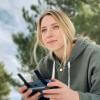














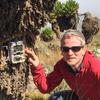

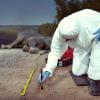
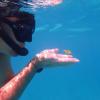

















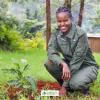

















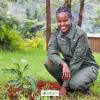
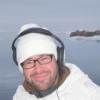







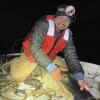




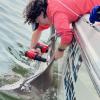

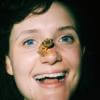



27 January 2024 4:07am
This definitely seems like the community to do it. I was looking at the thread about wolf detection and it seems like people here are no strangers to image classification. A little overwhelming to be quite honest 😂
While it would be incredible to have a powerful model that was capable of auto-classifying everything right away and storing all the detected creatures & correlated sensor data straight into a database - I wonder if in remote cases where power (and therefore cpu bandwidth), data storage, and network connectivity is at a premium if it would be more valuable to just be able to highlight moments of interest for lab analysis later? OR if you do you have cellular connection, you could download just those moments of interest and not hours and hours of footage?